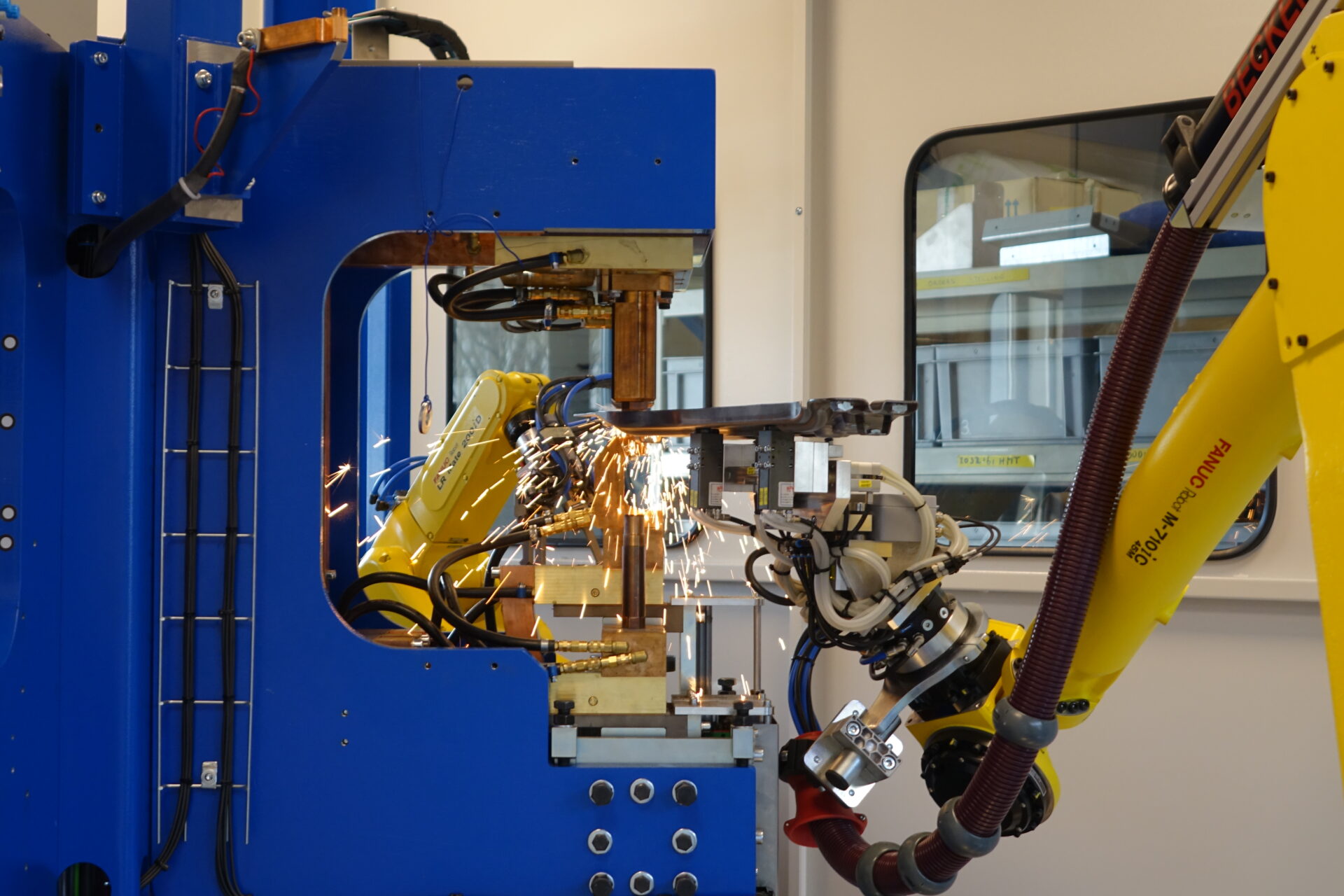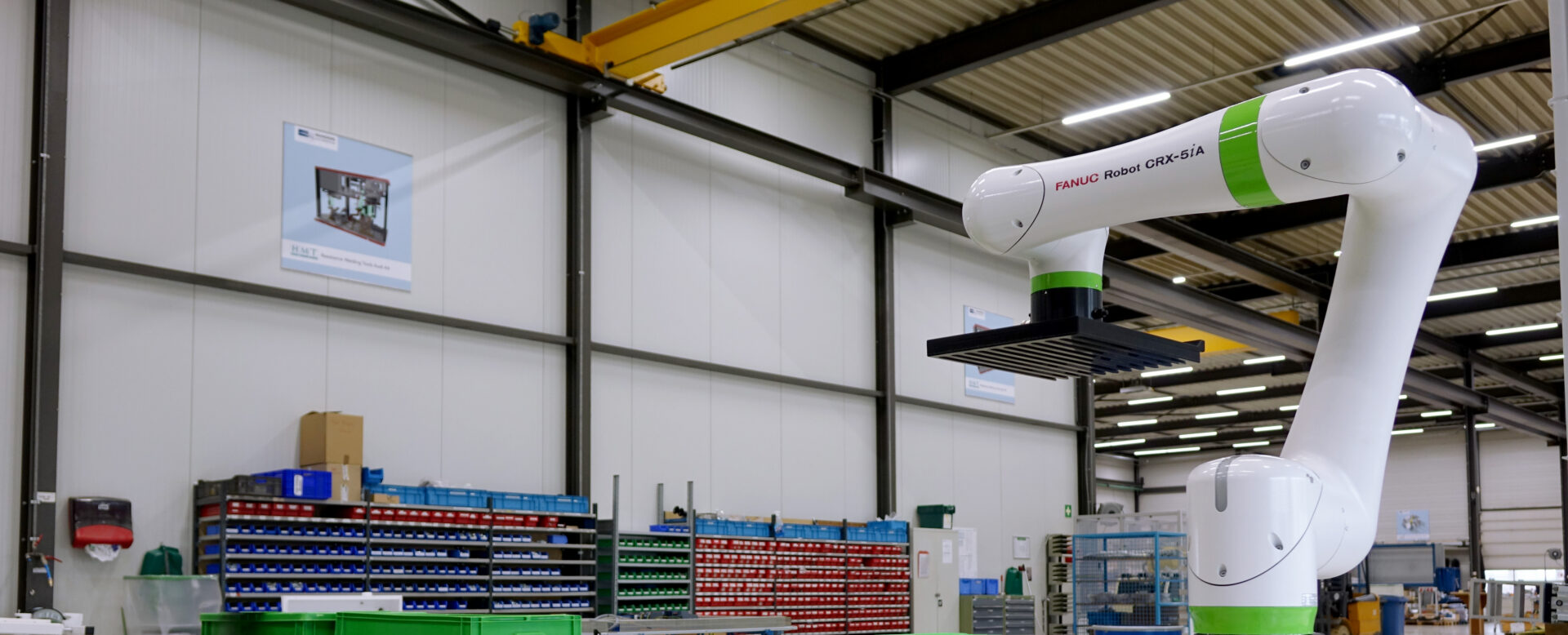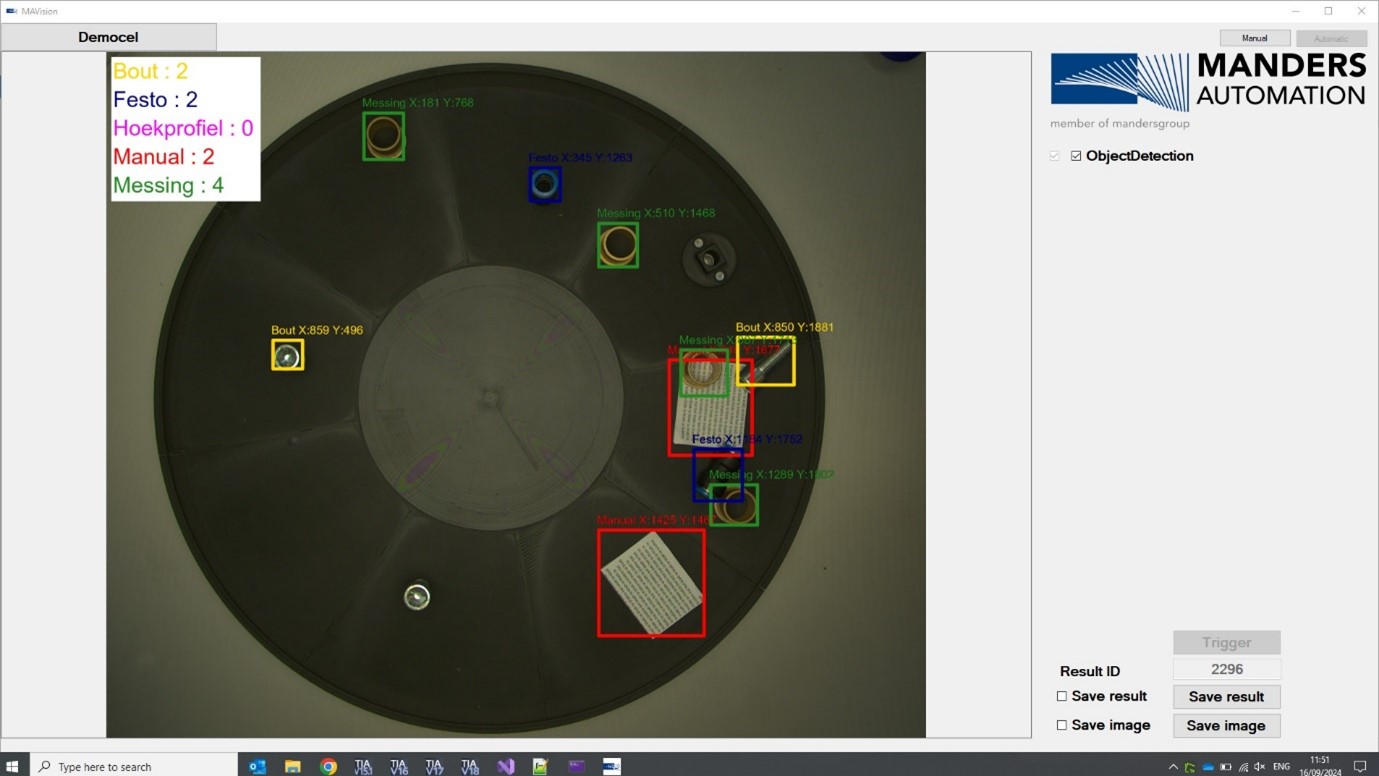In modern industrial production, welding robots are essential for ensuring precision, speed, and consistency. At Manders Automation, we understand that selecting the right welding technique is crucial for effective and efficient production. This article provides an overview of various welding techniques used by robots in production automation, including their advantages, disadvantages, and applications across different industries.
MIG/MAG welding
MIG (Metal Inert Gas) and MAG (Metal Active Gas) welding are popular techniques for welding metals, particularly steel and aluminum. These methods are commonly used in industries such as automotive, construction, and shipbuilding, where they are used to create car parts, heavy machinery, and structural steel. MIG/MAG welding offers the advantage of high welding speeds and is particularly effective for welding thick materials. It also provides good control over the weld pool, enhancing weld quality. However, this technique can lead to spatter and requires precise gas flow settings to achieve optimal results. Additionally, MIG/MAG welding is less suitable for welding thin materials.
TIG welding
TIG (Tungsten Inert Gas) welding is known for its precision and high-quality welds. This technique is ideal for applications where aesthetic finishing and a high level of control are required, such as welding pipelines, thin sheet metal, and stainless steel. TIG welding is widely used in the aerospace, food processing, and chemical industries. The advantages of TIG welding include the absence of spatter and its suitability for thin materials. However, it is slower than MIG/MAG welding, and the higher costs may be a consideration in large-scale production.

“We always make specific welding jigs for your products in our arc welding machines (MIG/MAG and TIG), ensuring they are welded correctly every time. This also allows for the addition of new products to existing welding processes.”

Spot welding
Spot welding is a technique commonly used to join thin sheets, for example, in the automotive industry for assembling car parts, and in consumer electronics for assembling metal housings. This method is fast and efficient and requires low heat input, which reduces the risk of material distortion. The control over weld quality is easily monitored, minimal energy is required, and no additional materials or shielding gases are needed. However, spot welding is limited to overlapping joints and is mainly suitable for specific material types and thicknesses.
Laser welding
Laser welding is an advanced technique used for welding small, complex components, such as in the electronics industry, medical sector, and precision mechanics. This method offers very high precision and minimal heat input, resulting in a clean weld seam without spatter. However, laser welding is expensive and requires precise positioning of the parts. It is also less suitable for thicker materials, which limits its applications.
Conclusion
Each welding technique has its unique features, advantages, and disadvantages, and the choice of technique depends on the specific requirements of the application, material, and industry. At Manders Automation, we are happy to advise you on the most suitable welding technique for your production process to ensure you work both efficiently and cost-effectively. For further questions or specific solutions in welding robots and automation, feel free to contact us. We are here to help you optimize your welding processes with the latest technologies.





